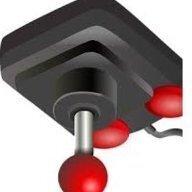Hello all who read this,
Sorry for adding bandwidth, but the nag pop-up insists I post to this thread. My flying status is "inactive" except for PC flight simulator and CFD. I was following the Small aircraft crashworthiness thread and was interested in some attachments so had to register!
I started learning on a Scout Mk3 (so don't take it I don't take risks) in the 80s, but after seeing the results of poor crashworthiness (not just on Scouts) required due to poor piloting and ill-conceived aircraft modifications/builds, I decided the inevitable expensive painful stay in hospital followed by life in a wheelchair was not for me as a learning experience. Watching such events close up and personal really shakes one's confidence and makes the need for risk mitigation crystal clear. I am looking to getting a safe aircraft when I will no longer feel guilty indulging myself while my children still need me: Sound familiar?
The Small aircraft crashworthiness thread has been excellent reading with special thanks to Dafydd Llewellyn for his excellent, balanced and authoritative input. When you really know what you are talking about you should not be expected word it as humble opinion, no matter how humble you are in person.
Poor piloting decisions made under pressure and limited time can be forgiven more easily than poor primary, secondary and tertiary aircraft safety decisions to which time and sense can be used until the risk is brought below the level you are willing to take. To quote the cliché that has kept me safe so far: "There are old pilots and bold (meaning those with poor judgment who do not mitigate risk) pilots, but there are no old bold pilots." I hope one day to be, and remain to be, an able bodied old pilot :-)
If you have an 'safe' unmodified quality factory built new plane, designed and maintained to all requirements my concern may seem excessive, however I am looking at the experimental aircraft category due to my engineering background and finances ;-). It is the thrill of flying, not the adrenaline rush created by surviving another flight that attracts me.
Sorry for rambling on, but it will probably be my last for a long while. Thanks again to all for your constructive informative postings,
Jethro


